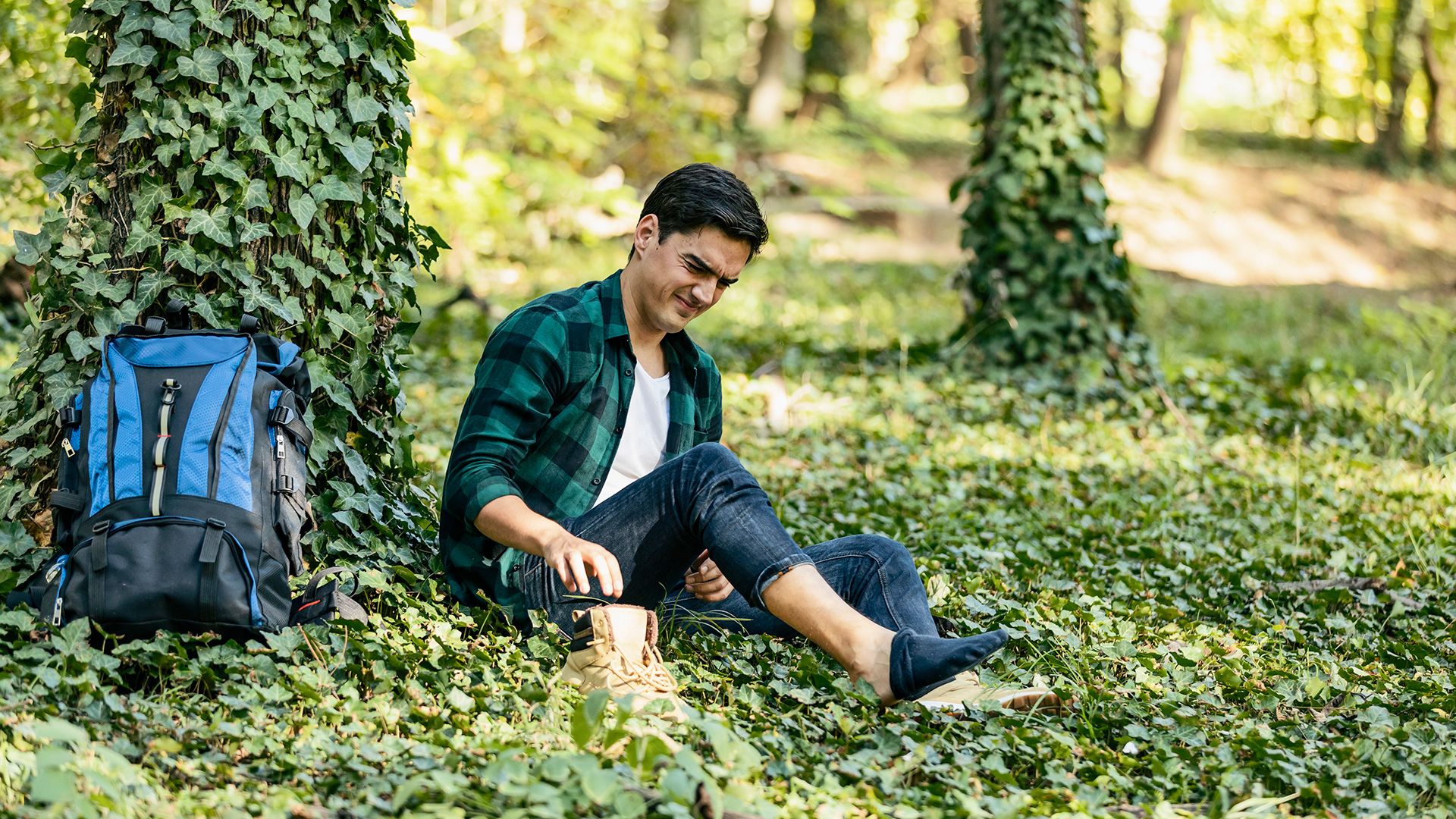Should I wear compression socks for hiking?
Compression socks could improve hiking performance and aid recovery. Here's what you need to know


Originally designed for medical purposes, compression socks have become incredibly popular for walking and offer a whole range of benefits from muscle support to quicker recovery. While today's best hiking socks are mostly just designed to help prevent blisters, a good pair of compression socks, fitted correctly, can help your legs feel energised on longer walks, postpone fatigue and even ward off the dreaded DOMS. Compression socks for running have similar benefits.
For hiking, you can opt for full compression socks, or if you are just looking for support and pressure on the lower leg, compression sleeves, which don't have the foot part. There are pros and cons to both options, and if you go for sleeves you'll probably need to also wear some walking socks, but there are plenty of compression socks designed for walking and hiking available that will keep you completely covered – such as those from CEP Sports (we're currently testing out a few pairs of these).
Of course, you'll still need to pair them with a good pair of walking shoes or hiking boots so your feet and ankles are supported (head to our roundups of the best hiking boots or the best walking shoes for men, for help there). But for now, let's take a look at the pros and cons of compression socks for hiking.
- Browse the best women's walking shoes
- ... or the best ladies' hiking boots
What are the benefits of compression socks for hiking?
There are a range of benefits of wearing compression socks for hiking, from improved blood flow to better drainage of lactate from muscles. While scientific research is still ongoing, studies have indicated several positives in wearing compression socks for sport and activities that will not only help walkers while out stomping across the countryside, but also afterwards, improving recovery times so you're fresh to get out again the next day.
First up, the compression itself, which is what compression socks were originally designed for. This pressure aids what's called venous drainage; the return of deoxygenated blood back to the heart and lungs where it's replenished with oxygen and recirculated. This blood has to fight against gravity up the legs, pushed only by blood pressure. Compression socks support the surrounding muscles and veins, providing a sturdier structure for blood to travel through, and also help prevent blood pooling in the legs.
This makes the system more efficient, and also means that lactate – the stuff that makes for fatigue and aching muscles after exercise – is also removed more efficiently so your legs feel better for longer while walking, and also recover better, reducing the impact of DOMS or 'delayed onset muscle fatigue'.
The gentle pressure also helps prevent the buildup of fluid in the lower legs and feet so they're less likely to swell up, which in turn can increase pressure inside your footwear, and increase the chances of pressure points or blisters. And of course that compression helps support the muscles themselves, so they're not working quite as hard and therefore stay feeling fresher and stronger for longer.
Get all the latest news, reviews, deals and buying guides on gorgeous tech, home and active products from the T3 experts
There are also benefits not related to the compression, such as the fact that if you go for the traditional, below-knee style, they provide physical protection from scratches and nettle stings, extra sun protection (though we still recommend wearing sunscreen!) and added warmth in cold conditions, which helps muscle function.
Are there any side effects of wearing compression socks for hiking?
Because the socks are designed to apply pressure over the whole surface of the lower leg and foot, you can expect them to feel quite snug. It's important to ensure that you put the socks on correctly so they distribute pressure evenly over your legs without bunching, which can cause extra pressure in some areas and therefore chafing, or reduction in blood flow.
And while hiking compression socks don't offer as high levels of pressure as medical compression socks, keep an eye out for any signs that might indicated they're having a negative impact on you, such as swollen veins, leg cramps, bluish/purplish skin, colour or temperature change in your toes or difficulty breathing. These could indicate that the socks are negatively affecting blood flow through your legs, and in which case you should remove the socks immediately and, if the effect is severe, seek medical advice.

Is there anyone who shouldn't wear compression socks for hiking?
Compression socks aren't for everyone. If you have a peripheral vascular disease in your legs – a disease that affects blood flow – then you need to steer clear. Likewise, if you have conditions that make your skin sensitive to pressure or very delicate skin, you may find that the pressure of the socks causes irritation. In either case, if you are at all unsure, you should check with your doctor before trying compression socks for walking.
What level of compression is right for hiking?
Unlike medical compression socks, which have a range of compression strengths and sizes that are specific to the individual and their medical needs, compression socks for walking usually offer light to medium compression.
- Don a pair of the best walking trousers
- ... or the best hiking leggings, and hit the trails
How long should you wear compression socks for?
So long as you've got the right size, they're on correctly and they aren't inhibiting blood flow, then it's fine to wear your compression socks all day. In fact several socks are designed specifically for this purpose, though we suggest you don't actually wear them 24 hours a day. You may find that if you keep them on once you've finished exercise for a few hours (or swap to a clean pair which may be more comfortable) the benefits will continue and they'll help your legs recover faster.
However, you should avoid wearing the same pair more than once without washing as dirt and bacteria can start to build up.
Writer, journalist and Spindrift Podcast host Aoife has over 10 years product-testing experience, and has written and reviewed for Red Bull, MBUK, Trek UK, Bikeradar, BikePerfect, Cycling Plus, Fit&Well and of course T3 (and a few others). A keen cyclist, mountain biker and outdoor adventurer, you’ll usually find her out in the forests or up a mountain somewhere.
